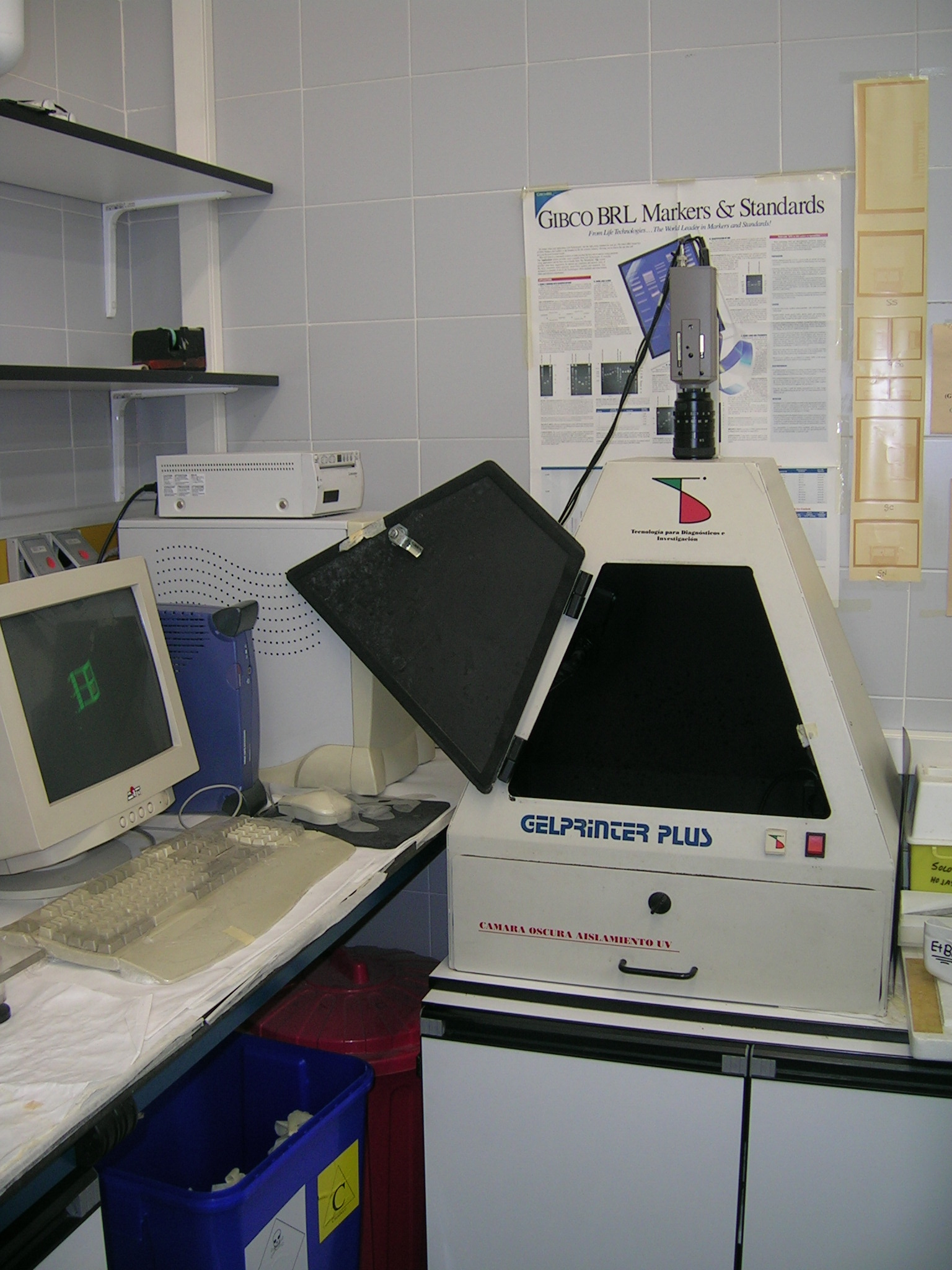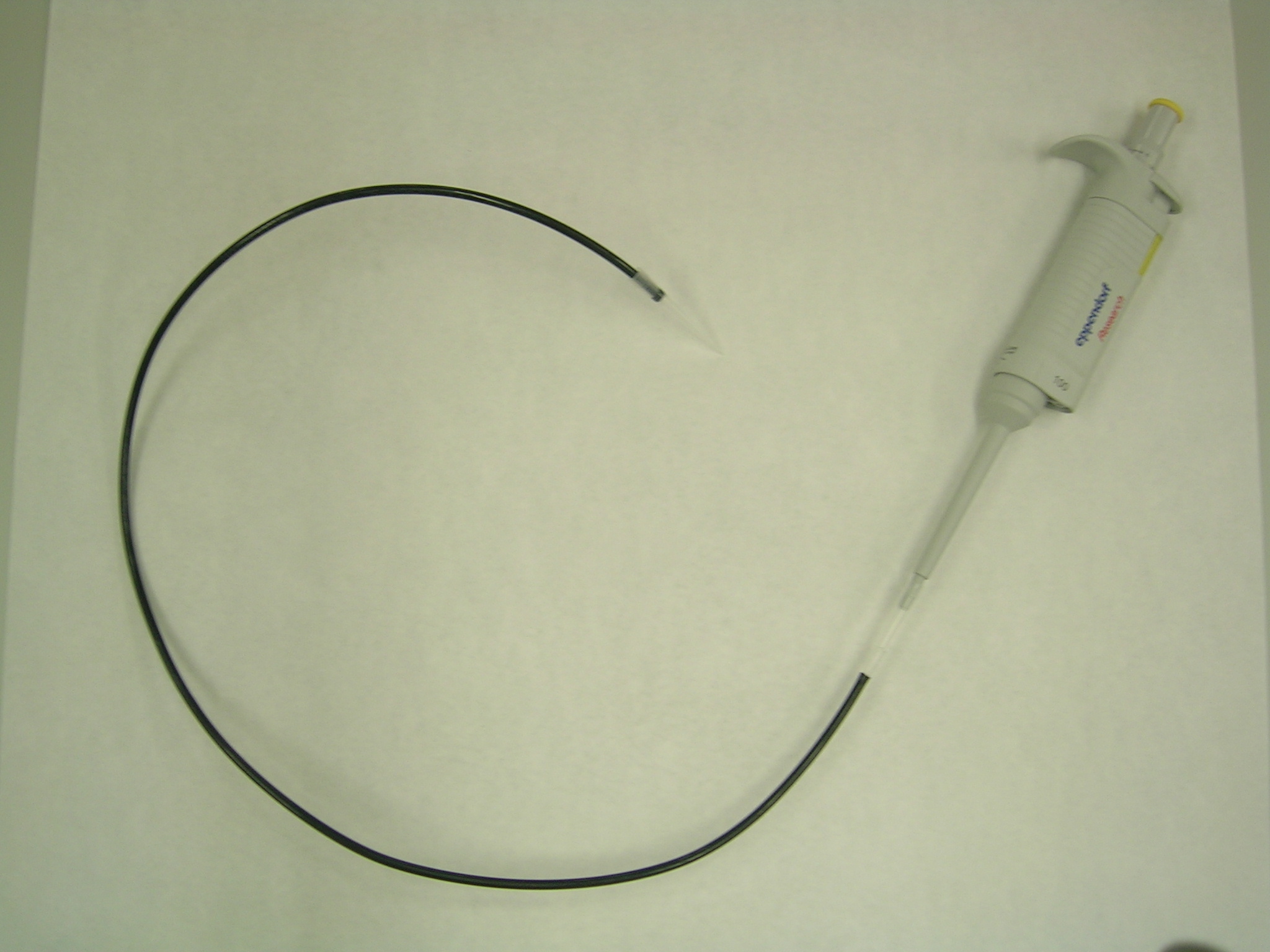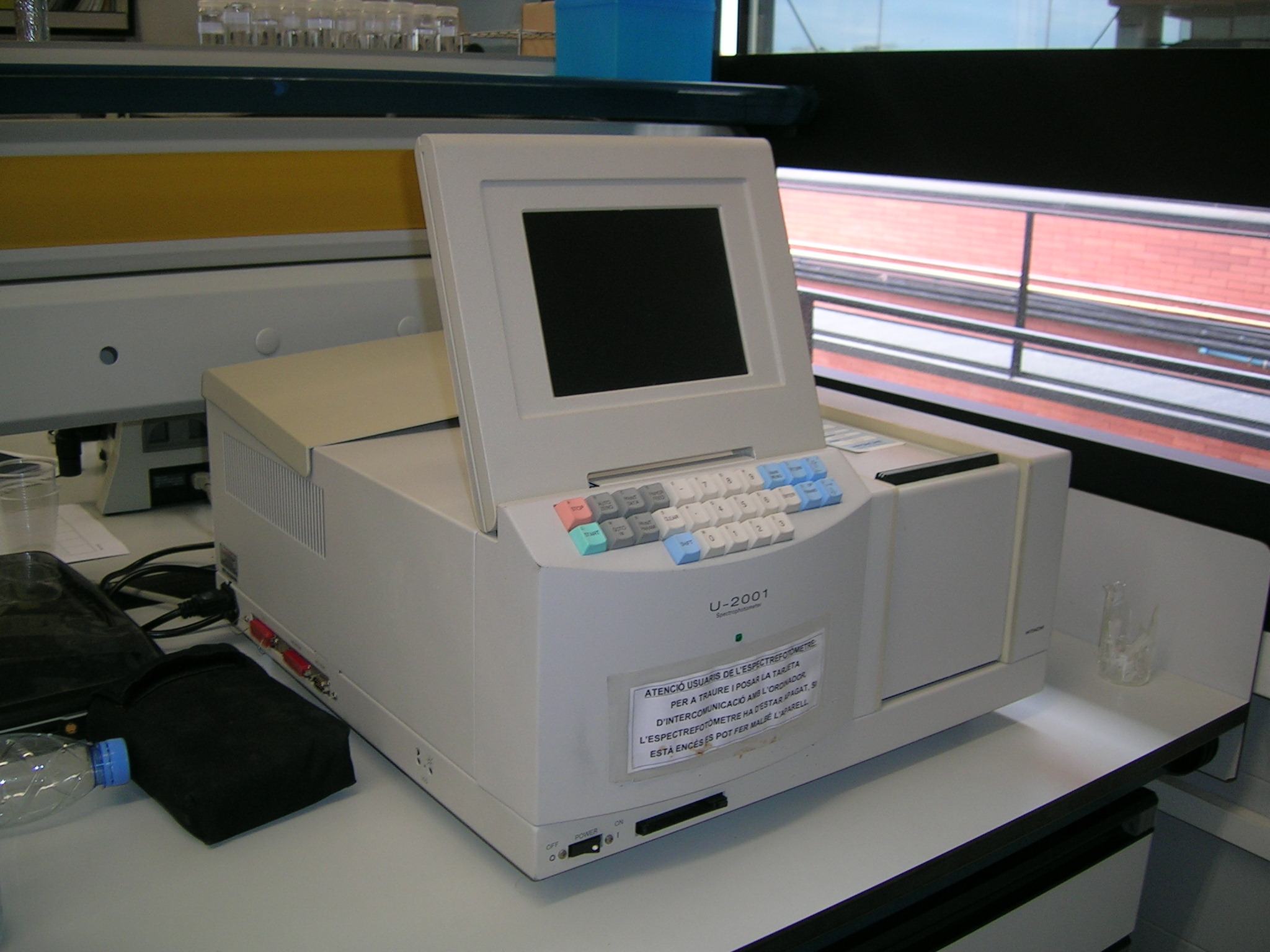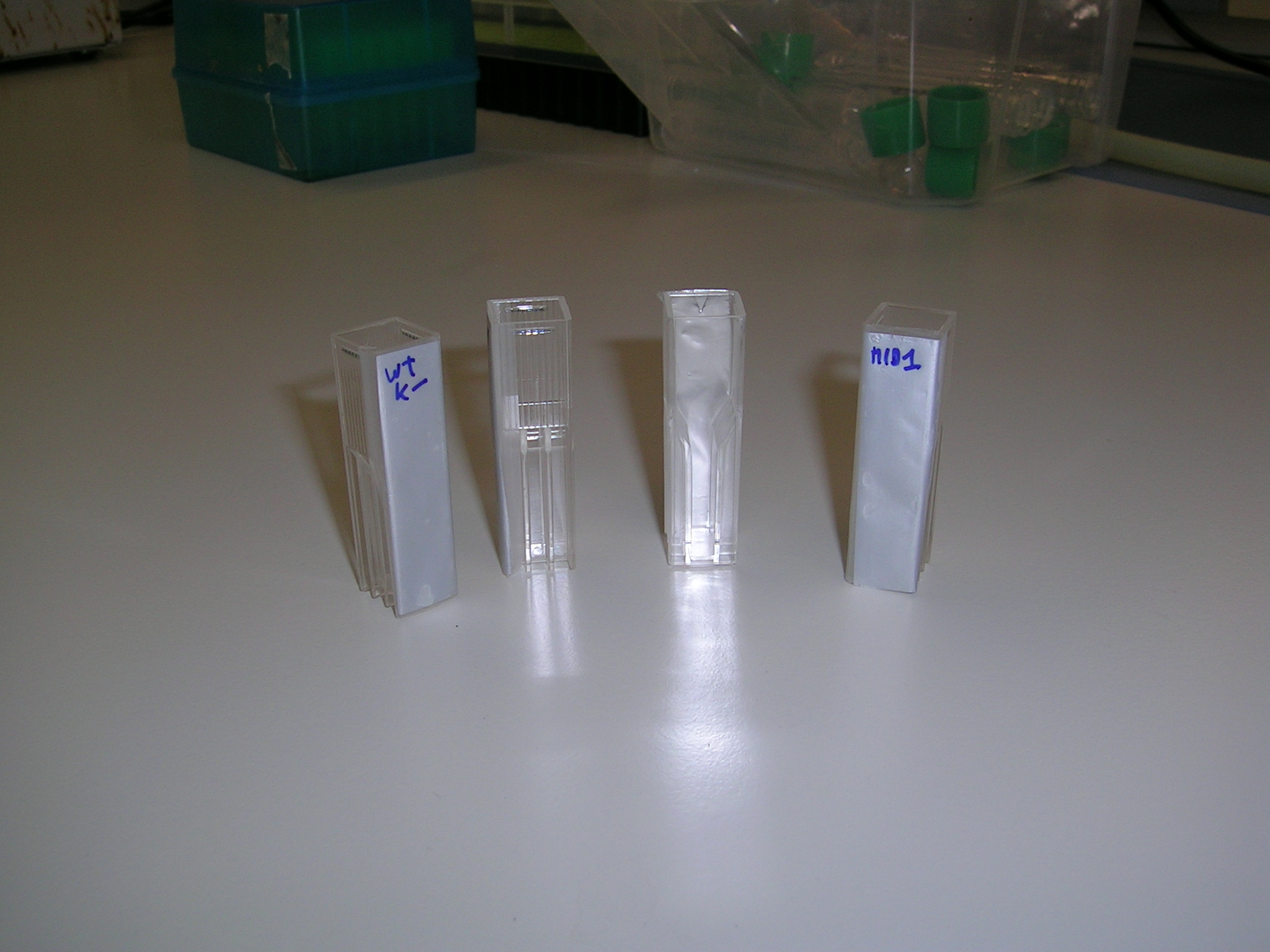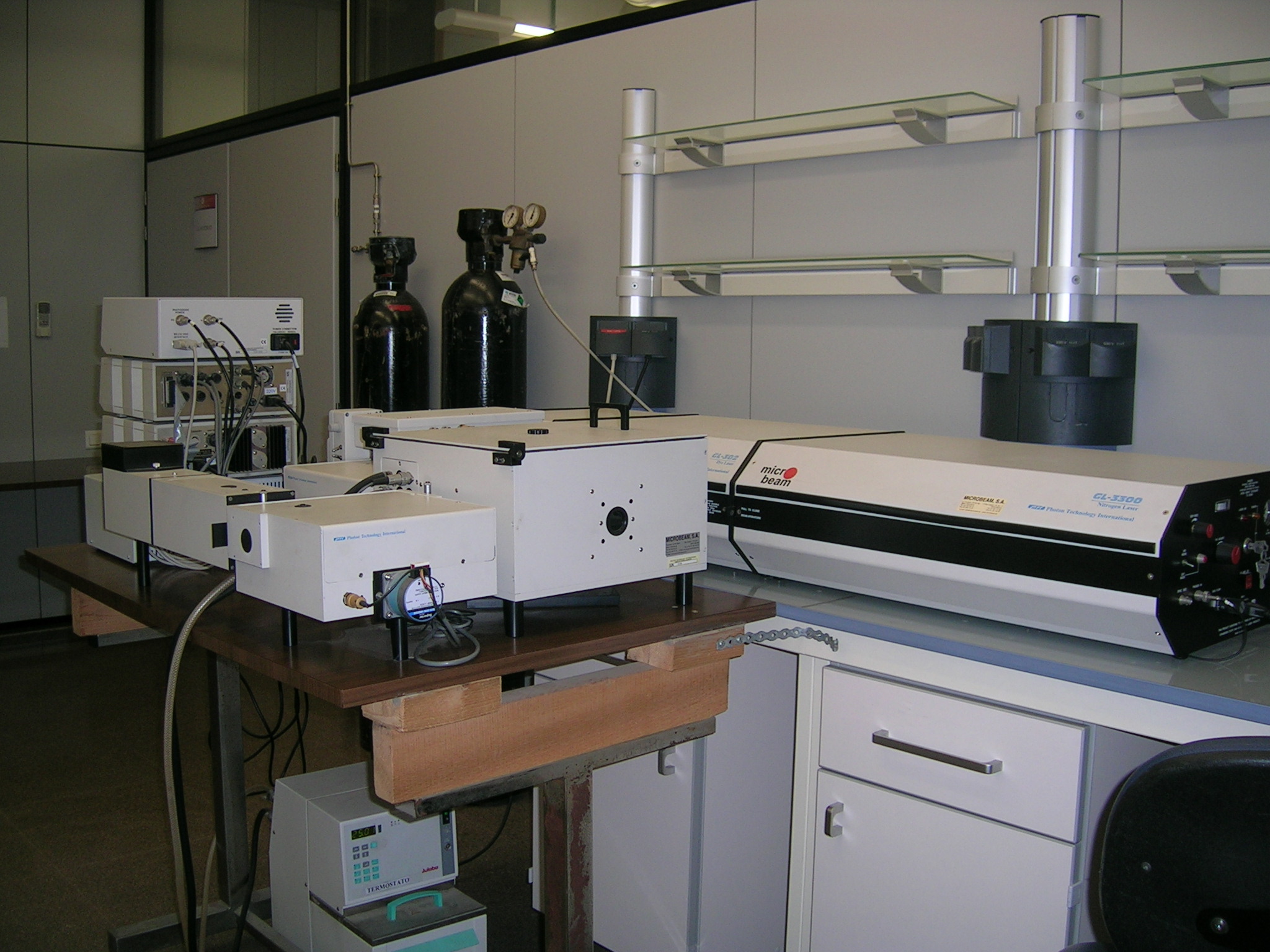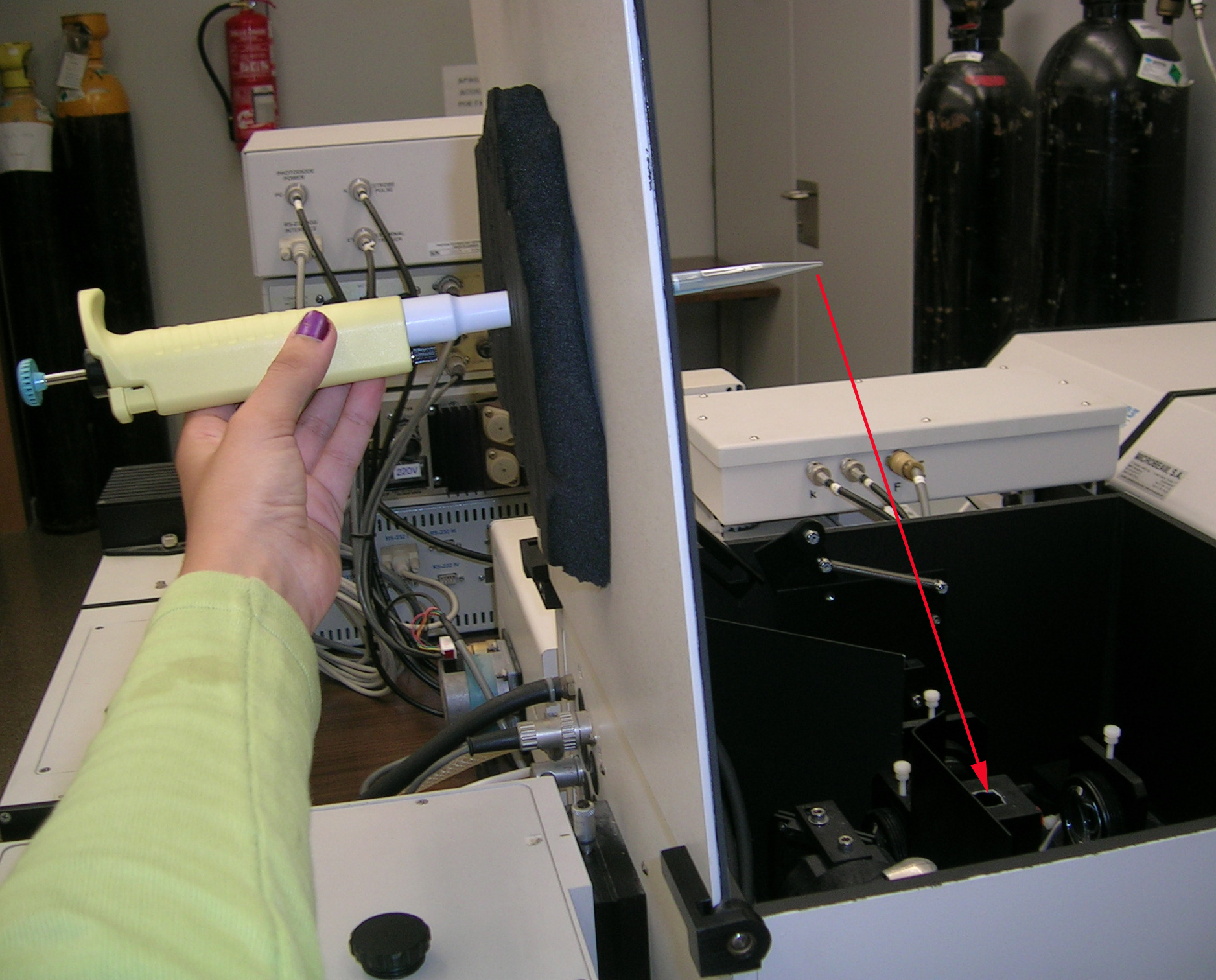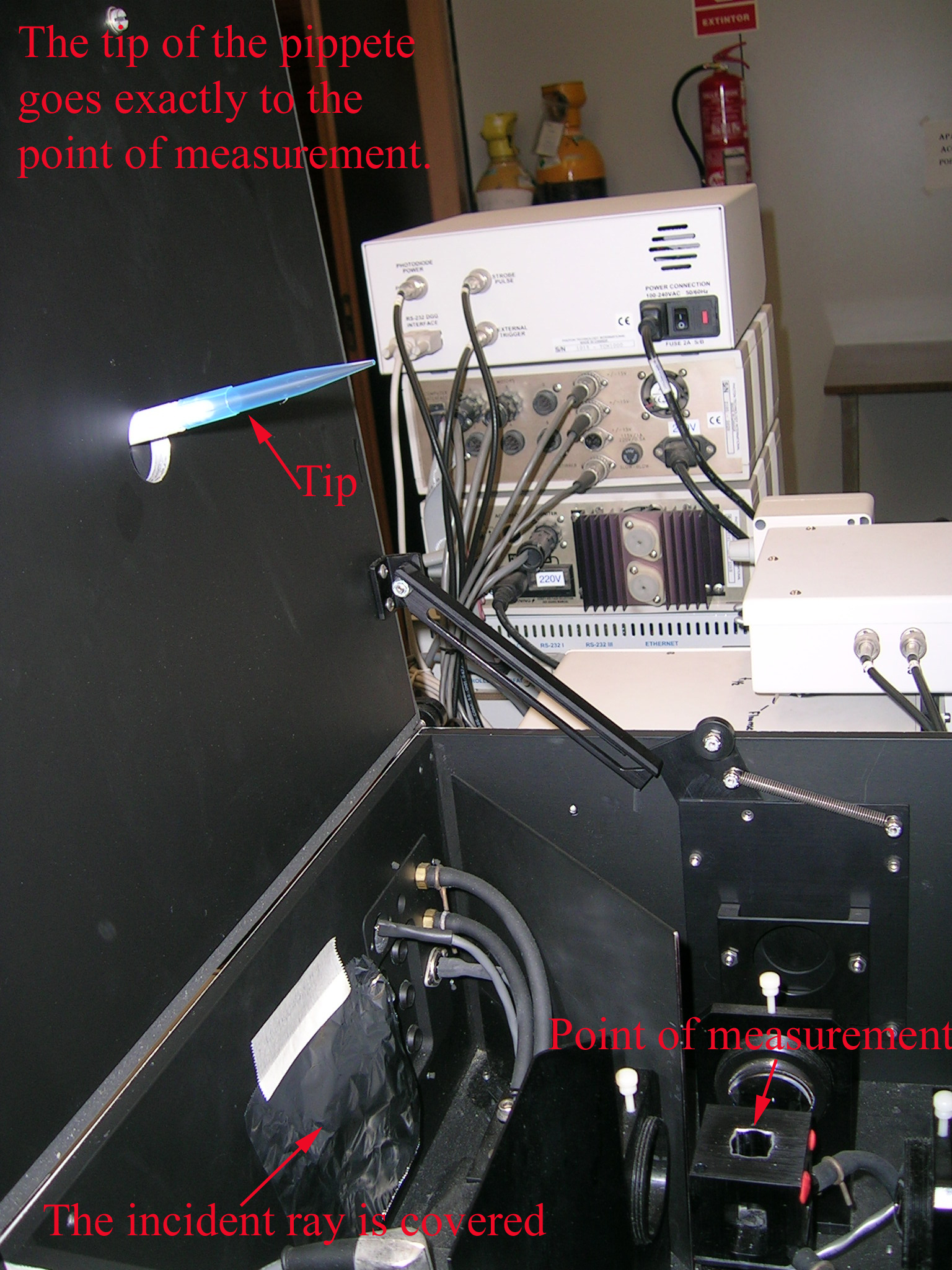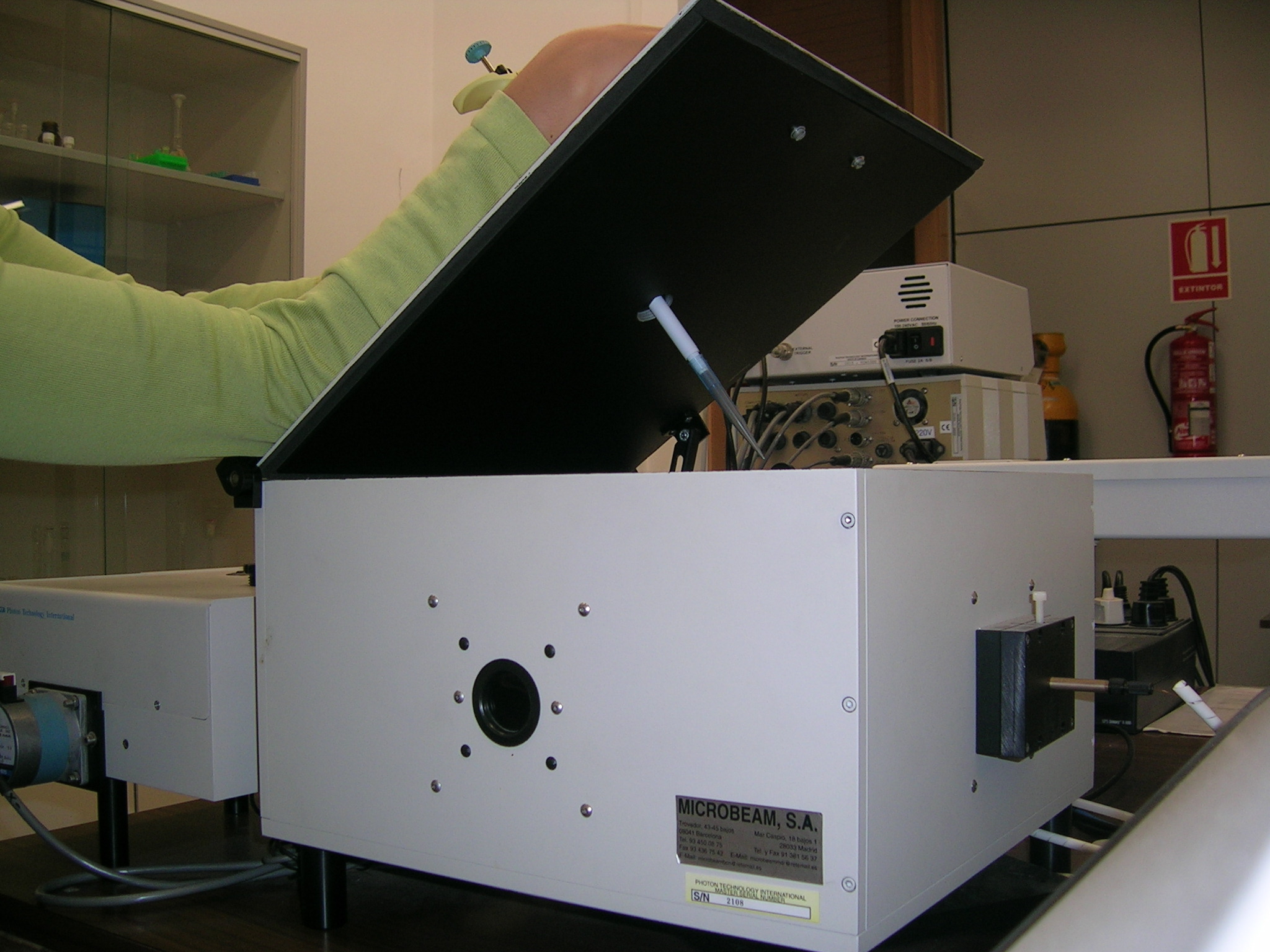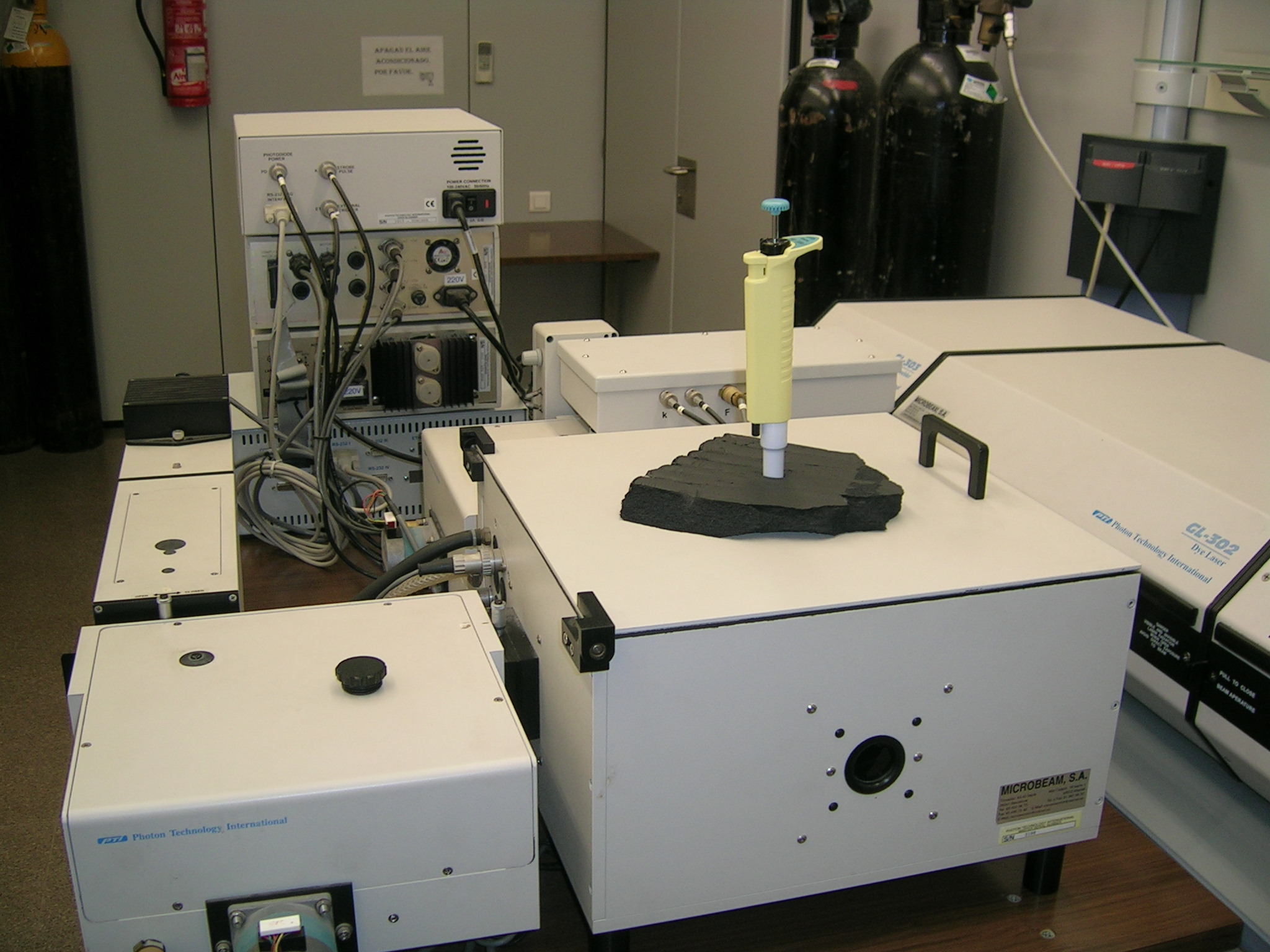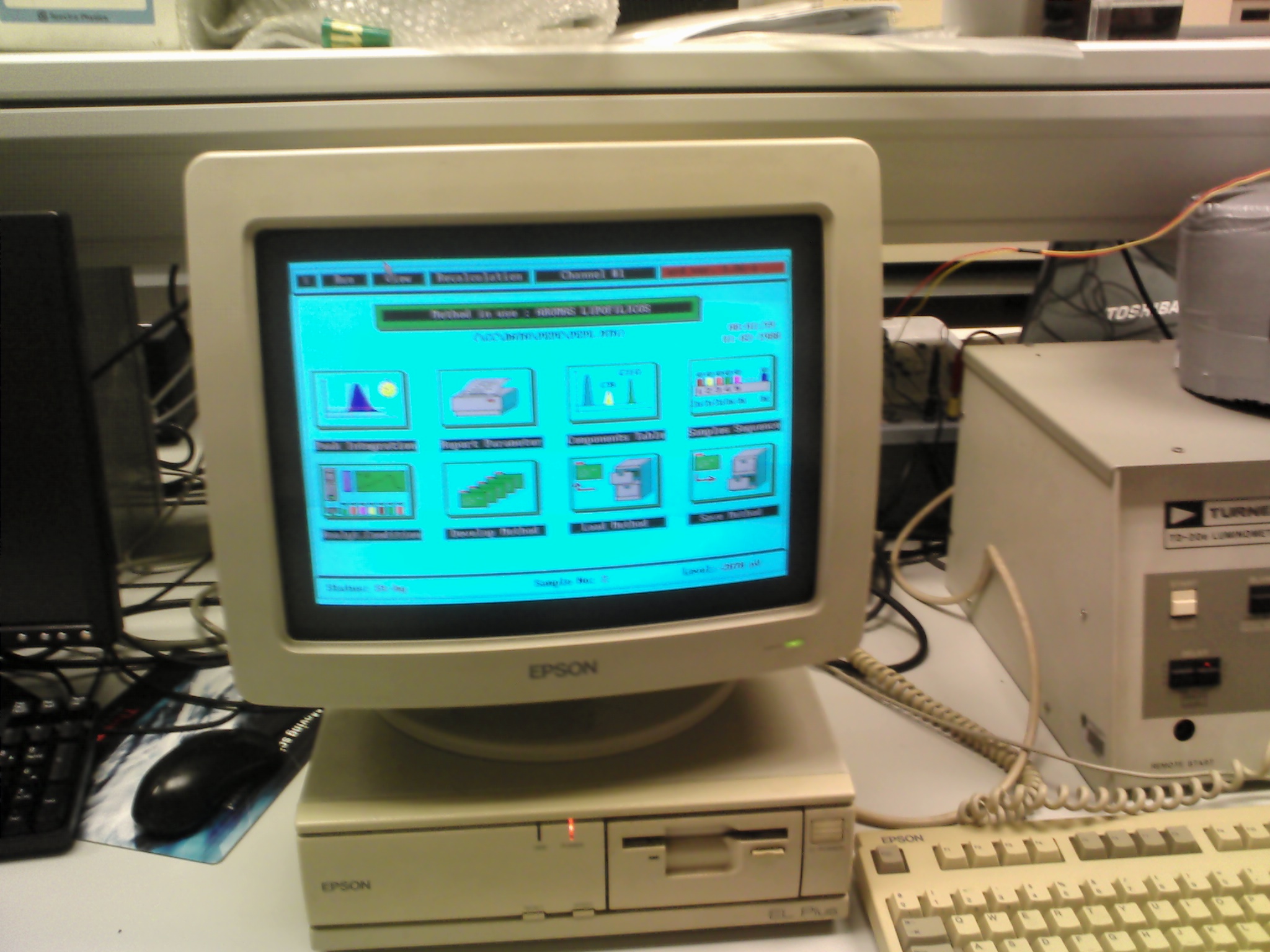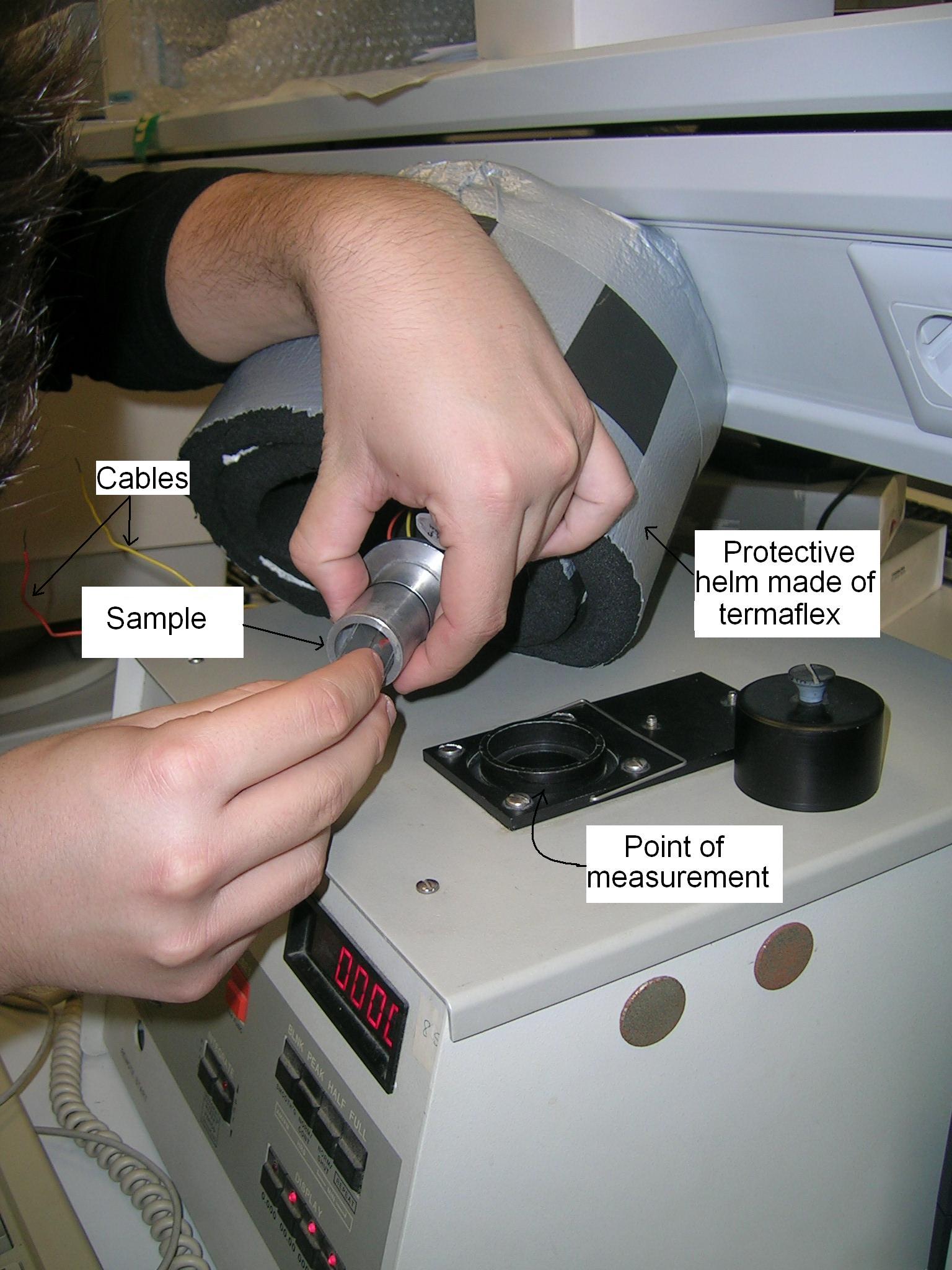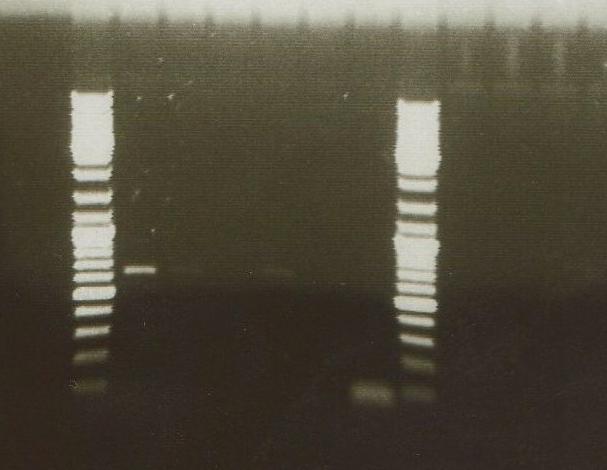Team:Valencia/WetLab/YeastTeam/Experimental
From 2009.igem.org
| (29 intermediate revisions not shown) | |||
| Line 1: | Line 1: | ||
{{Template:Valencia09iGEM23}} | {{Template:Valencia09iGEM23}} | ||
| + | <html> | ||
| + | <style> | ||
| + | #content{ | ||
| + | height: 8150px; | ||
| + | } | ||
| + | </style> | ||
| + | </html> | ||
<br> | <br> | ||
| - | + | ||
| - | <div align="justify" style="position:relative; top:- | + | <div align="justify" style="position:relative; top:-250px; margin-left:190px; width:700px; font-size:10pt; font-family: Verdana;"> |
<span style="color:black; align:justify; font-size:10pt; font-family: Verdana"> | <span style="color:black; align:justify; font-size:10pt; font-family: Verdana"> | ||
| + | |||
<center> | <center> | ||
| + | __NOTOC__ | ||
{| | {| | ||
!Methods | !Methods | ||
| Line 20: | Line 29: | ||
|align="left"|[[Team:Valencia/WetLab/YeastTeam/Experimental#SPECTROFLUORIMETER|Spectrofluorimeter]] | |align="left"|[[Team:Valencia/WetLab/YeastTeam/Experimental#SPECTROFLUORIMETER|Spectrofluorimeter]] | ||
|align="left"|[[Team:Valencia/WetLab/YeastTeam/Experimental#Ligating BioBricks into plasmids|Ligation]] | |align="left"|[[Team:Valencia/WetLab/YeastTeam/Experimental#Ligating BioBricks into plasmids|Ligation]] | ||
| + | |- | ||
| + | |align="left"|[[Team:Valencia/WetLab/YeastTeam/Experimental#LUMINOMETER|Luminometer]] | ||
|- | |- | ||
|width="200px"| | |width="200px"| | ||
| Line 27: | Line 38: | ||
=='''Experimental methods'''== | =='''Experimental methods'''== | ||
| - | |||
<br> | <br> | ||
To make measurements properly and determinate luminiscence levels, we needed a luminometer. But we couldn’t use one before September. So, if we didn’t want to waste our limited time, we decided to try with other machines. | To make measurements properly and determinate luminiscence levels, we needed a luminometer. But we couldn’t use one before September. So, if we didn’t want to waste our limited time, we decided to try with other machines. | ||
| Line 36: | Line 46: | ||
[[Image:Igem2b.JPG|center|400 px|]] | [[Image:Igem2b.JPG|center|400 px|]] | ||
| + | <br> | ||
| - | |||
That was the first idea we got. It consisted to try to capture the luminiscence produced by our yeast with the camera that is normaly used to take gel photos. We thought that if we increased exposure time, we could acumulate enough luminiscence produced in time to see it, at the photo. | That was the first idea we got. It consisted to try to capture the luminiscence produced by our yeast with the camera that is normaly used to take gel photos. We thought that if we increased exposure time, we could acumulate enough luminiscence produced in time to see it, at the photo. | ||
We put our yeast after the different steps of our protocol in a multi-hole plaque and add the alcaline input. Fastly, we used to close the GelDoc door, but we had doubts about the velocity of the response, and we couldn’t be inside the GelDoc to start the measure at the same time we make the input. In order to make sure our yeasts weren’t making light too fast, we designed a very simple but precise mechanism. We called it PippeteEnlarger. | We put our yeast after the different steps of our protocol in a multi-hole plaque and add the alcaline input. Fastly, we used to close the GelDoc door, but we had doubts about the velocity of the response, and we couldn’t be inside the GelDoc to start the measure at the same time we make the input. In order to make sure our yeasts weren’t making light too fast, we designed a very simple but precise mechanism. We called it PippeteEnlarger. | ||
| + | <br> | ||
===PIPPETE ENLARGER=== | ===PIPPETE ENLARGER=== | ||
| Line 92: | Line 103: | ||
===LUMINOMETER=== | ===LUMINOMETER=== | ||
| + | <br> | ||
| + | At last, we found a luminometer at Instituto de química molecular aplicada at UPV. Luminometers are more sensible and have more precision than espectrophotometer and espectrofluorimeter. Luminometer is ideal to work with aequorin, but was difficult to us to find one (we were looking for one and found two ^^). | ||
| - | + | There are two types of luminometers: continuous and discontinuous. The discontinuous make punctual measures, in our case every 30 seconds. The continuous measures continuously, every second. Is important to note that we use two different luminometer, provided by different manufacturers. For this reasons we can't compare directly the results obtained with one luminometer with the results of the other. According this, we only compare results in the same graph if they were obtained with the same luminometer. However, an increase (or not) in the luminosity, means the same at two luminometers and the experiments are complementary and reaffirms our conclusions. | |
| - | + | Each luminometer has its own protocol. | |
| - | + | First, we work with a discontinous luminometer. It measures every 30 seconds. We make a lot of measurements, trying to optimize the electrical input with the light generation. It's connected to a computer, where we see the value of luminescence. To measure luminescence, luminometer have a Elisa plate, where we put our yeasts. After, we introduce the Elisa plate into luminometer and click Start on computer. After 15 seconds we have the measure of luminosity. | |
| - | Continuous luminometer have a cuvette where we put the cells. The cuvette must be very closed. We devise a system to applicate the electrical stimulus when the cuvette is closed. This luminometer also have a computer, but it was very old! | + | After, in the same department, we used a continuous luminometer. This is better because measures instantly, every second and the results obtained are more reliable. With this two luminometer we make the caracterization of ''Aequorin'' and obtained the results that demonstrate that we were right. WE CAN CREATE A CELL-BASED BIOSCREEN. Continuous luminometer have a cuvette where we put the cells. The cuvette must be very closed. We devise a system to applicate the electrical stimulus when the cuvette is closed. This luminometer also have a computer, but it was very old! |
| - | [[Image:HiTech! val.jpg]] | + | [[Image:HiTech! val.jpg|center|315 px]] |
| + | |||
| + | With the discontinuous luminometer, we couldn't measure live, so we didn't desinged any kind of natural-light-protector for the sample while we were measuring. | ||
| + | |||
| + | [[Image:Valencia_luminometer.JPG|left|300 px]]However, in order to make measurements with the continuous luminometer, we needed to prevent light entering inside the machine, as in all the other cases, just at the moment of the input. In that particular device, we had to be extremely accurate: our continuous luminometer is very sensitive and natural light disables it when the sensor gets too dilated. When that happens, the luminometer needs about a week to return to its proper state. | ||
| + | We built a structure similar to a protective helmet made of termaflex, with a little hole where the cables cross it, and put that construction on the top of the measurement point, where our sample must be placed. Any entrance of light was prevented and we measured luminiscence without problems | ||
| + | <br><br><br><br><br><br><br> | ||
==Protocols== | ==Protocols== | ||
===Measurement of citoplasmic Ca<sup>2+</sup> increase in <i>S. cerevisiae</i>=== | ===Measurement of citoplasmic Ca<sup>2+</sup> increase in <i>S. cerevisiae</i>=== | ||
| Line 193: | Line 212: | ||
===Preparing vectors=== | ===Preparing vectors=== | ||
| - | Competent cells were transformed with pSB1A3 with the J04450 insert (present in the kit plate 1, hole 1K from the 2009 plasmid backbone distribution kit). We used the transformation protocol of | + | Competent cells were transformed with pSB1A3 with the J04450 insert (present in the kit plate 1, hole 1K from the 2009 plasmid backbone distribution kit). We used the transformation protocol of XL10-Gold Ultracompetent Cells of Stratagene. We selected transformed cells in a LB + ampicillin medium plaques. <br> |
The following day, we selected red colonies, those that had the plasmid, and plasmids were extracted with the High pure miniprep plasmid isolation kit (ROCHE) <br> | The following day, we selected red colonies, those that had the plasmid, and plasmids were extracted with the High pure miniprep plasmid isolation kit (ROCHE) <br> | ||
Plasmid were digested with EcoRI and XbaI, in the same way we digested PCR result.<br> | Plasmid were digested with EcoRI and XbaI, in the same way we digested PCR result.<br> | ||
| - | |||
===Ligating BioBricks into plasmids=== | ===Ligating BioBricks into plasmids=== | ||
Latest revision as of 23:31, 21 October 2009
| Methods | Protocols |
|---|---|
| GelDoc | Citoplasmic Ca2+ burst |
| Pippete Enlarger | BioBrick PCR protocol |
| Spectrophotometer | Preparing vectors |
| Spectrofluorimeter | Ligation |
| Luminometer | |
Experimental methods
To make measurements properly and determinate luminiscence levels, we needed a luminometer. But we couldn’t use one before September. So, if we didn’t want to waste our limited time, we decided to try with other machines.
This way, we had dt ideas, and we thought a GelDoc camera, an espectophotometer and a espectofluorimeter could be useful for us, at least to determinate the presence/absence of the luminiscence.
GELDOC
That was the first idea we got. It consisted to try to capture the luminiscence produced by our yeast with the camera that is normaly used to take gel photos. We thought that if we increased exposure time, we could acumulate enough luminiscence produced in time to see it, at the photo.
We put our yeast after the different steps of our protocol in a multi-hole plaque and add the alcaline input. Fastly, we used to close the GelDoc door, but we had doubts about the velocity of the response, and we couldn’t be inside the GelDoc to start the measure at the same time we make the input. In order to make sure our yeasts weren’t making light too fast, we designed a very simple but precise mechanism. We called it PippeteEnlarger.
PIPPETE ENLARGER
The Pippete Enlarger is easy to assemble using a pippete, a thin tube and two pippete tips: one has to fit into the tub (so size tip deppends on size tub) and the another one has to be the proper tip to take the volume we want.
So, we will explain the mechanisme in the way we did it. We needed to make an input of 30 microliters of KOH without open the door. We had to enlarge the pippete to put the tip in the correct hole with the closed door and trigger the mechanism out of the GelDoc. We decided to full the tube with KOH, make pressure in one of the extrems of the tube, preventing by capilarity the liquid go away, and connect the pippete with an intermediary tip in the other extrem (the volume had to be already prefixed). The extrem we were pressing could be released at this point, so we could put the correct tip (in our chase, a yellow tip) to catch the desired volume. Before to be loaded with 30 microliters of KOH, we fixed the tip in the hole we wanted, we closed the door and carry on the pippete outside the GelDoc.
We were ready to start the measurement, making sure we increased enough the exposure time. Then, we pulled out the 30 microlitres actioning the pippete. It was surprisingly acurate!!! The volume was almost exactly, with 1 or 2 microliters of error. We dind’t got any result. We could rule out, then, the possibility that our yeasts produce light meanwhile we were putting them in the GelDoc, or we were closing the door...
GelDoc camera was not an efficient way to detect our luminiscence, so we thought perhaps a spectrophotometer was a more addient machine.
SPECTROPHOTOMETER
Altough an spectophotometer is a machine that measures how cloudy a sample is, by emitting a ray of light, we can “trick” the machine. Sticking a piece of silver paper in one of the faces of the little tank, we prevent the ray of light cross the sample. The idea is to measure only the light produced by the sample, not the “crossing light”.
We didn’t obtain any result, but that was probably because the spectrophotometer has been designed to detect a very located light ray, not a difused light produced by a bioluminiscent sample.
SPECTROFLUORIMETER
Spectrofluorimeter measures the fluorescence of a sample. That’s because it has the same problem of the spectrophotometer. However, we found that it’s more sensible (it detects a great quantity of noise). So we thought it could be a more proper machine to our purposes.
We designed a similar experiment, covering the place where the ray of light is emited, in order to measure only the bioluminiscence produced by our yeasts.
We didn’t obtain any result. But we were worried about the speed of the reaction another time. Then, we decided to rule out the possibility as we did it with the GelDoc: starting the measure before adding the alkaline input. But this machine was different, so we designed a different experiment.
We found a hole (normaly closed) in the tap, just uppon the the place where the sample is. Using a piece of termaflex, we crossed it with the pippete, and put it in the hole, isolating the overture and preventing light got in and artefact our result. Another time, that was extremely acurate, and when we closed the door, the tip went exactly to the point where our sample was placed. This way, we started to measure before adding the input. Next, we pulled out hte 30 microliters of KOH in the little tank. We got depressed when we didn’t obtain results. But for this time, we were in September, and the luminometer was available for us.
In some days, our hard work was going to give us nice surprises.
LUMINOMETER
At last, we found a luminometer at Instituto de química molecular aplicada at UPV. Luminometers are more sensible and have more precision than espectrophotometer and espectrofluorimeter. Luminometer is ideal to work with aequorin, but was difficult to us to find one (we were looking for one and found two ^^).
There are two types of luminometers: continuous and discontinuous. The discontinuous make punctual measures, in our case every 30 seconds. The continuous measures continuously, every second. Is important to note that we use two different luminometer, provided by different manufacturers. For this reasons we can't compare directly the results obtained with one luminometer with the results of the other. According this, we only compare results in the same graph if they were obtained with the same luminometer. However, an increase (or not) in the luminosity, means the same at two luminometers and the experiments are complementary and reaffirms our conclusions.
Each luminometer has its own protocol.
First, we work with a discontinous luminometer. It measures every 30 seconds. We make a lot of measurements, trying to optimize the electrical input with the light generation. It's connected to a computer, where we see the value of luminescence. To measure luminescence, luminometer have a Elisa plate, where we put our yeasts. After, we introduce the Elisa plate into luminometer and click Start on computer. After 15 seconds we have the measure of luminosity.
After, in the same department, we used a continuous luminometer. This is better because measures instantly, every second and the results obtained are more reliable. With this two luminometer we make the caracterization of Aequorin and obtained the results that demonstrate that we were right. WE CAN CREATE A CELL-BASED BIOSCREEN. Continuous luminometer have a cuvette where we put the cells. The cuvette must be very closed. We devise a system to applicate the electrical stimulus when the cuvette is closed. This luminometer also have a computer, but it was very old!
With the discontinuous luminometer, we couldn't measure live, so we didn't desinged any kind of natural-light-protector for the sample while we were measuring.
We built a structure similar to a protective helmet made of termaflex, with a little hole where the cables cross it, and put that construction on the top of the measurement point, where our sample must be placed. Any entrance of light was prevented and we measured luminiscence without problems
Protocols
Measurement of citoplasmic Ca2+ increase in S. cerevisiae
Modified from the original Denis and Cyert (2002) JCB 156; 29-34.
Material
- pEVP11[AEQ] plasmid: apoaequorina expression (Batiza et al.(1996) J.Biol.Chem. 271: 23357-62).
- Coelenterazine solution: Diluted coelenterazine until 590μM in satured N2 metanol. This compound is extremely photosensible and it's inhibited by O2. Kept at –20ºC.
- Note: We bought Coelenterazine, Native (CLZn) 50 μg Ref. C-2230 de SIGMA. We put N2 gas into metanol during 5 minutes, and we added inmediately 200μL to the 50μg of coelenterazine.
- Luminometer.
- Luminometer tubes and ELISA plaques.
Procedure
- We recieved pEVP11[AEQ] aequorin transformed yeast from Joaquin Arinyo.
- We let growing up o/n in SD lacking Leu medium to maintain plasmid expression.
- After incubation, measure OD a 660nm y calculate the necessary volum to obtain in 250μL a final OD of 1,8. Put that volum into an eppendorf tube with a hole in its tap.
- Centrifugate 1 minute at 13000rpm.
- Discard the supernatant.
- Resuspend the pellet into 250μL of fresh medium with coelenterazine 2μM (aprox. 3,5μL of coelenterazinestock solution / μL de medio).
- Incubate during 5,5 horas at ambient temperature, in agitation and keeping in the darkness.
- Centrifugate 1 minute at 13000rpm. Discard the supernatant and resuspend in SD lacking Leu fresh medium without coelenterazine (see the proper volum below *).
- Wait 15 min (yeast luminiscence is increased due to a peak of Ca2+ is induced by the glucose (Nakajimashimada et al. (1991) PNAS 88; 6878-82).
- Measure basal luminiscence during 15 minutes.
- Add the correct reactive volum to induce luminiscence.
In the case of alcaline induction:
8. Add 170μL of medium.
9. Add 30μL of KOH 100mM.
Other stress types:
- NaCl: 30μL NaCl 5M (0,75M final).
- CaCl2: 30μL CaCl2 1.33M (200mM final).
- KCl: 30μL KCl 100mM.
Note: yeasts should be treated sequentialy and in the same way to obtain reproducible results.
Preparing inserts by PCR
Total DNA was extracted from our yeast strains.
AEQ was amplified by PCR using oligonucleotides matching the sequence and bearing the appropriate Biobrick prefix and suffix.
And our oligos (EcoRI and XbaI sites in bold) were:
Forward: 5'gaattcgcggccgcttctagatgaccagcgaccaatactc 3’
Reverse: 5’tactagtagcggccgctgcagttaggggacagctccaccg 3’
PCR was conducted as follows:
- A first denaturation cycle
- 94º 3min
Followed by 30 amplification cycles:
- 94º 30s
55º 1min
72º 1min
And a final extension step:
- 72º 7min
Results:
1 = wt (1 microlitre)
2 = wt (2 microlitres)
3 = Cch1 (1 microlitre)
4 = Mid1 (1 microlitre)
5 = Negative Control
6 = Possitive Control
(We used the same MWM)
Amplicon has 600 pb's.
We used wt 1 microlitre of PCR amplification product (career 1) to build the AEQ BioBrick.
Firstly, we purified the DNA from the agarosa (High Pure PCR Product Purification Kit, Roche). Later, amplicons were digested (H buffer) with EcoRI y XbaI.
Preparing vectors
Competent cells were transformed with pSB1A3 with the J04450 insert (present in the kit plate 1, hole 1K from the 2009 plasmid backbone distribution kit). We used the transformation protocol of XL10-Gold Ultracompetent Cells of Stratagene. We selected transformed cells in a LB + ampicillin medium plaques.
The following day, we selected red colonies, those that had the plasmid, and plasmids were extracted with the High pure miniprep plasmid isolation kit (ROCHE)
Plasmid were digested with EcoRI and XbaI, in the same way we digested PCR result.
Ligating BioBricks into plasmids
Both plasmids and inserts were run into 0.8% 0.5X TBE agarose gels and DNA bands excised with a clean scalpel. DNA was extracted from agarose blocks (ultra clean gel spin, DNA purification Kit, MO BIO laboratories).
T4 Ligase was used to ligate inserts and vectors for 1 h at room temperature (2X quick buffer was used).
Competent cells were transformed and resulting colonies (Amp LB) screened with Fw and Rv primers to confirm the presence of inserts.
 "
"
